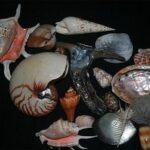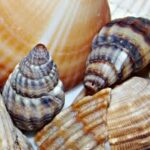Are you looking to alter your letter “S” lesson plan this year? If so, you may want to consider focusing on the sea urchin. Based on my experience, the prickly creatures may be factored into an itinerary in many ways. Here’s a quick rundown on a few of them:
Begin the sea urchin lesson plan by popping an ocean sounds nature CD into your classroom’s audio system. While the music is playing, pass around sea urchin spines, shells and whole sea urchins (dried). They are available for purchase through specialty and craft stores like Seashell World, Seashell Supply and Atlantic Coral Enterprise, Inc. On average, a package of spines or shells will cost you less than $3 apiece. Whole, dried sea urchins tend to retail for $6 apiece.
Proceed by showing the children full color photos of what live sea urchins look like. Then pass around pieces of live coral and seaweed snacks. Live coral is available for purchase through stores that specialize in saltwater aquarium supplies. Prices will vary. As far as the seaweed snacks go, they are available for purchase through gourmet shops and major grocery stores.
While the children examine the items, explain that sea urchins are typically found in coral reefs and dine on seaweed. There is a “Sea Urchin Feeding on Kelp” video posted on the Monterey Bay Aquarium’s website that you could use as a visual aid. Next, talk about how humans and other animals eat seaweed too. Then let the children sample the seaweed snacks.
Afterward, ask the children to raise their hands if they liked the taste of seaweed. Once they do, take a hand count and record their answers onto a graph for all to see. Later, compare the number of students that liked the seaweed snacks to the number that didn’t and let the kids practice writing those numbers.
Continue the science lesson by discussing how humans and other animals also eat sea urchins. To make your point, show the children color photos of sea urchins being prepared and eaten by humans and sea otters. Afterward, read Robert F. Baldwin’s book “This is the Sea that Feeds Us” aloud. Doing so will help to reinforce the concept of various animals’ places in the food chain. Follow it up with a reading of Martha E.H. Rustad’s book “Oceans Alive: Sea Urchins.” It will help lay to the foundation for the remainder of your science lecture.
Once you’ve finished reading the books, discuss the sea urchin’s distinguishing attributes, diet, behaviors and life cycle with the children in more depth. There is an awesome video titled “Sea Urchin: Planktonic Origins” posted on the Plankton Chronicles website that you may want to use as a visual aid during your discussion.
When you are finished lecturing, give the children a series of handouts to color and complete. You’ll also want to let them practice writing the word “sea urchin” as well as the letters “S” and “U.” Worksheets to consider using are a diagram of a sea urchin’s anatomy, a sea urchin coloring page and a sea otter eating a sea urchin coloring page. Those printables are available through such websites as Enchanted Learning, Family Education and Education. The Education website also features a “U is for Urchin” worksheet that you may find useful as well.
Lastly, help the children create a series of sea urchins. For starters, you could let them sculpt the creatures out of sand dough and colorful, dyed toothpicks. Another option would be to let them use homemade salt or puffy paint, uncooked spaghetti and glue to make sea urchins on paper. The choice is yours.
Source: Personal Experience
More from this contributor:
Best 5 Robin Redbreast Themed Snacks for Pre-Kinders
Super Books about Strawberries for Pre-K Students
Top 5 Places to Swim with the Dolphins in Florida
Best Ways to Give Oral Medication to Dogs







